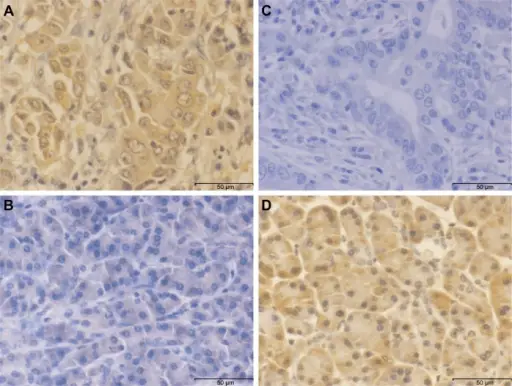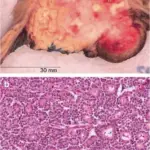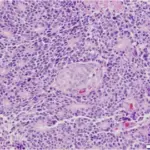Pancreatic carcinoma aka ductal carcinoma of the pancreas is a highly aggressive lethal malignancy due to the lack of early diagnosis and limited response to treatments.
What is the Pathology of Pancreatic Carcinoma?
The pathology of pancreatic carcinoma is:
-Etiology: The cause of pancreatic carcinoma is smoking, a diet rich in fats, chronic pancreatitis, obesity, alcohol consumption.
-Genes involved: K-RAS gene, SMAD4 gene, p53 tumor suppressor gene
-Pathogenesis: The sequence of events that lead to pancreatic carcinoma; arise from the exocrine and endocrine part of the pancreas, smoking, thought to twofold the risk of pancreatic tumor, diabetes mellitus, and pancreatitis are associated with an increased risk of pancreatic tumor. There is also familial clustering to pancreatic cancer. The study of a highly aggressive lethal malignancy affecting the structure and function of the pancreas. It is seldom diagnosed at its early stages as it is asymptomatic till it metastasize to other organs.
-Morphology: The morphology associated with pancreatic carcinoma shows hard, stellate, gray-white, poorly defined masses.
-Histology: The histology associated with pancreatic carcinoma shows dense stromal fibrosis with poorly formed glands and the presence of inflammatory cells.
How does Pancreatic Carcinoma Present?
Patients with pancreatic carcinoma are typically common in males than females present at an age range of 60 to 80 years. The symptoms, features, and clinical findings associated with pancreatic carcinoma include noteworthy weight loss, fatigue mid-epigastric, anorexia, jaundice, and back pain.
How is Pancreatic Carcinoma Diagnosed?
Pancreatic carcinoma is diagnosed through laboratory studies, tumor makers, carbohydrate antigen 19-9. Imaging- pelvis, abdominal CT scan, transcutaneous ultrasonography, endoscopic ultrasonography, and endoscopic retrograde cholangiopancreatography.
How is Pancreatic Carcinoma Treated?
Pancreatic carcinoma is treated through surgical intervention, chemotherapy, and radiotherapy adjuvant.
What is the Prognosis of Pancreatic Carcinoma?
The prognosis of pancreatic carcinoma is poor, with a median survival rate of 4 to 6 months. less than 5% 5-year survival rate.



